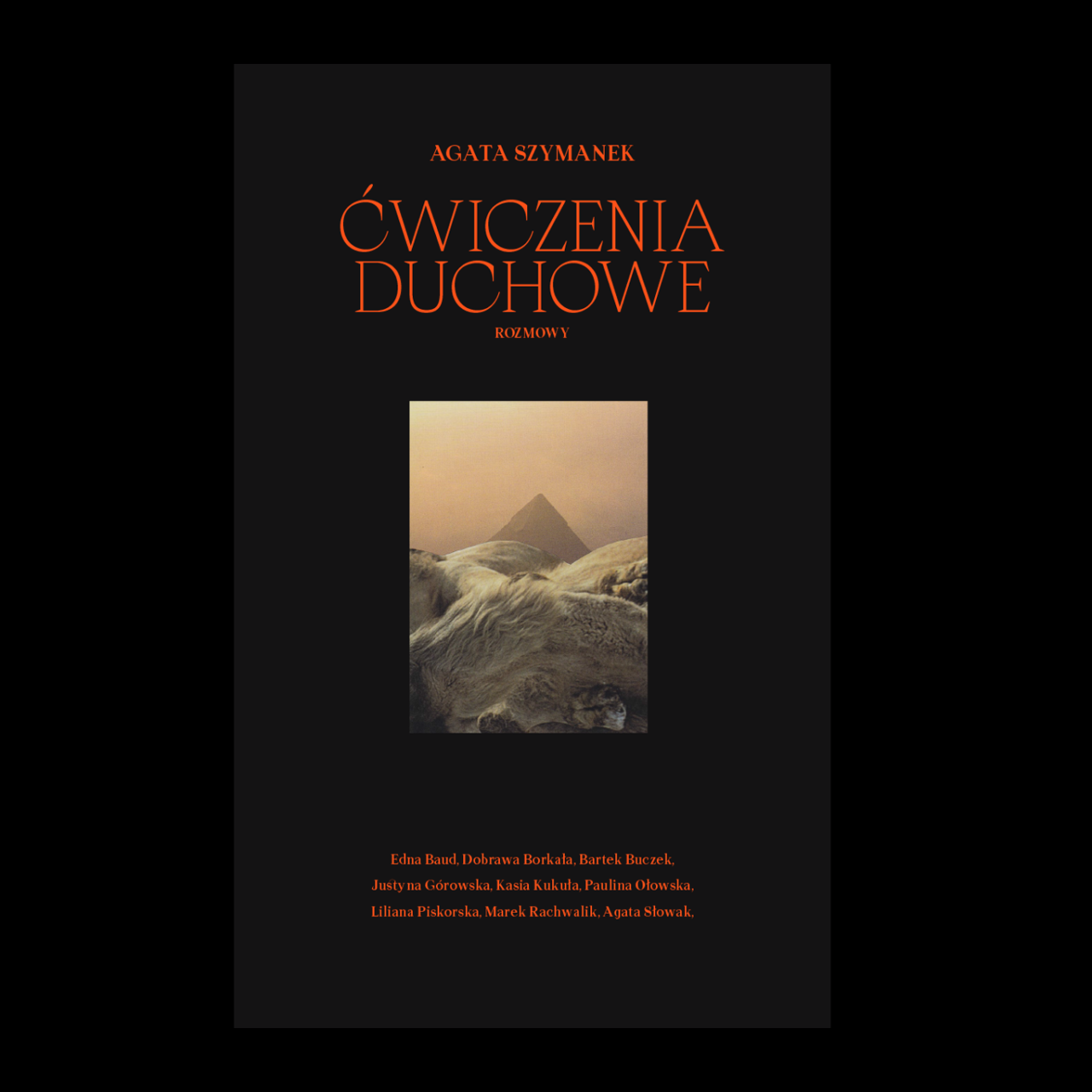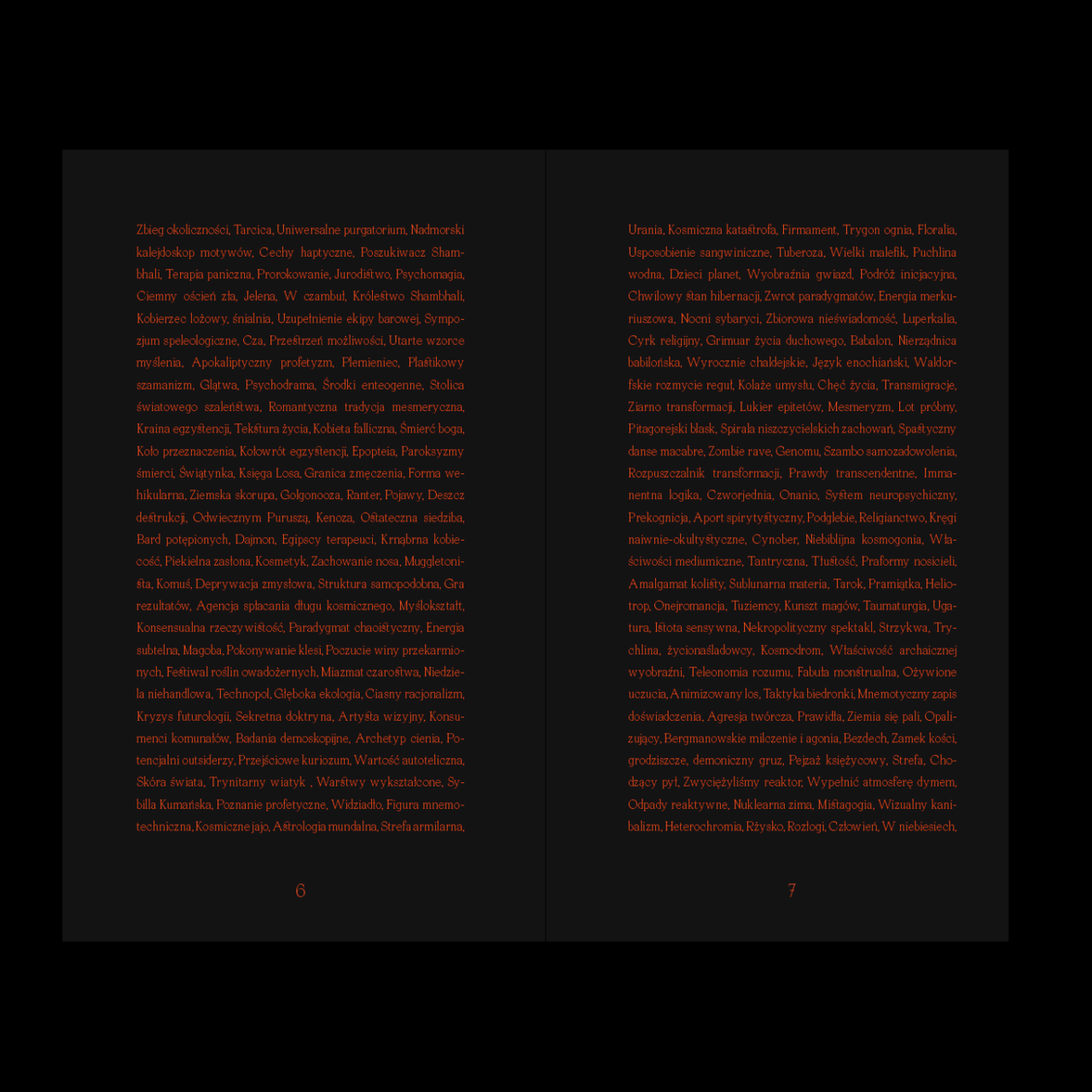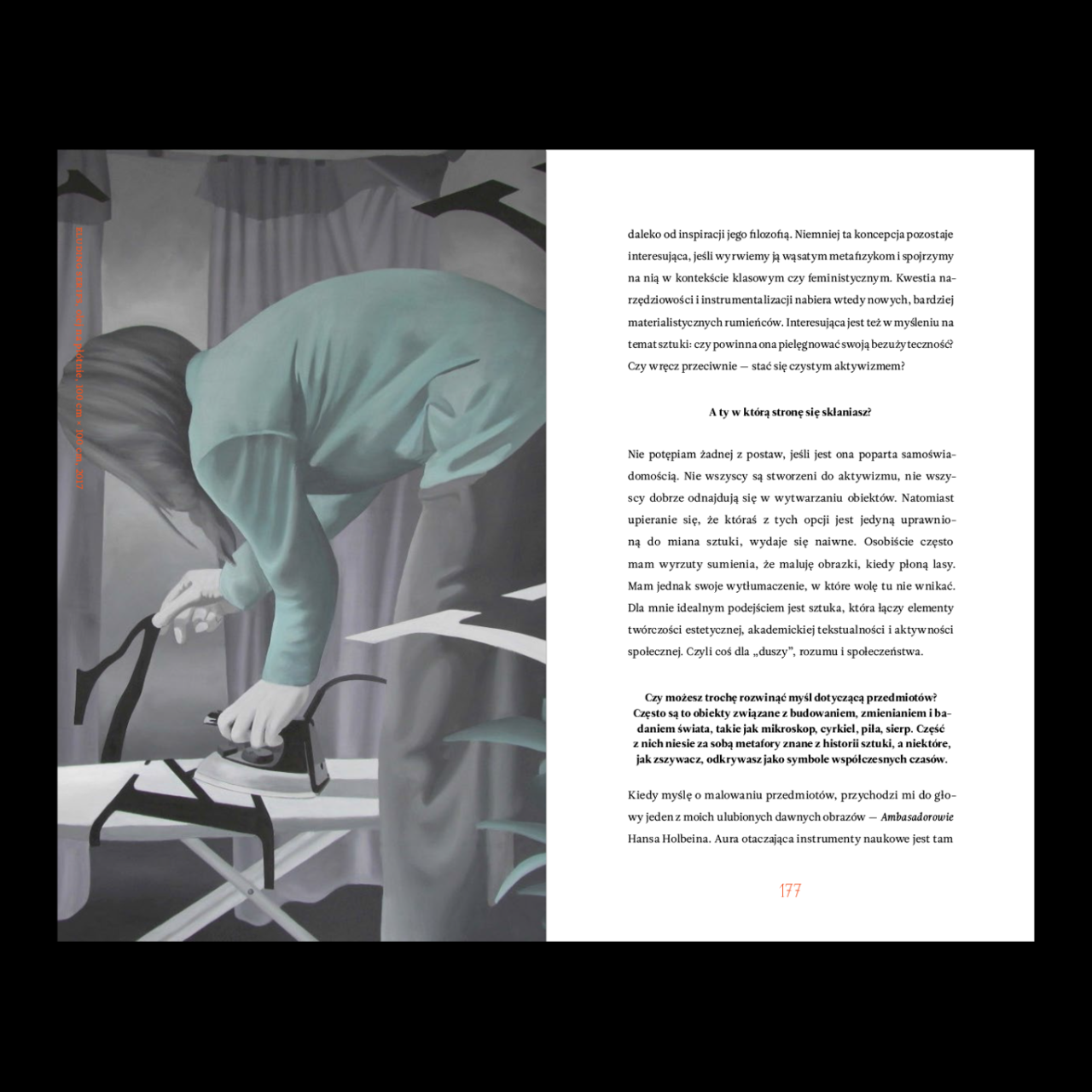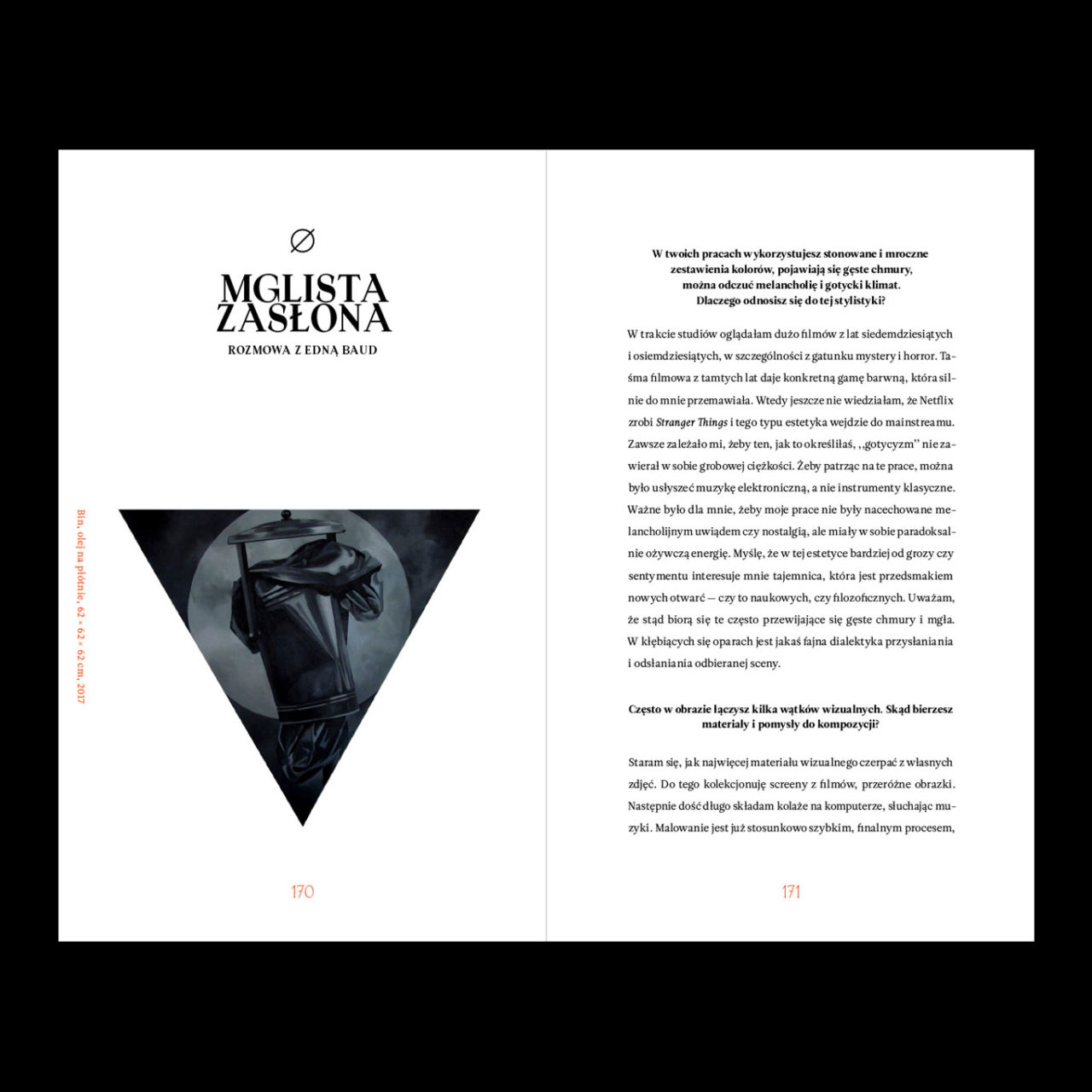Agata Szymanek – Spiritual Exercisies – file to download
The book Spiritual Exercises researches magical and esoteric motives in Polish contemporary art practices. The publication features interviews with Edna Baud, Dobrawa Borkała, Bartek Buczek, Justyna Górowska, Kasia Kukuła, Paulina Ołowska, Liliana Piskorska, Marek Rachwalik and Agata Słowak. The conversations are intimate statements that reflect on creative activities related to spirituality, feminism, environmental and political activism, as well as a skeptical attitude towards ubiquitous esoteric bluff.
Tłumaczenie zrealizowano w ramach programu stypendialnego Ministra Kultury i Dziedzictwa Narodowego – Kultura w sieci
The interviewed authors present extremely diverse views on issues related to spirituality. A key to the interviews was to recognize their opinion by observing single motives in their works. Because of general approach to magic and esotericism and due to referring to a wide scope of knowledge about the symbols of alchemy, astrology, ceremonial magic and other eclectic systems, as well as about yoga, meditation and use of psychedelics, the conducted studies are merely a recognition of the subject. Therefore it is a basis for another, more detailed research.
The part with interviews starts with the interview conducted with Paulina Ołowska who reveals the background of the seance with Alina Szapocznikow, explains the meaning of magic accessories in a photo session with Laura Morgan and presents the character of ‘The Wise Woman’ – a woman, who knows. The author of Zemsta wróżki [the Revenge of the Wise Woman] wonders about the relationships between magic and art and shows the transformation from the ‘This- is -all- magic’ thinking to treat the magic practice as a religious manifestation.
Marek Rachwalik describes the reality of his paintings as, on the one side, covered with a metal darkness, and on the other hand – as a precisely constructed childish sculpture made of Lego blocks. This is the space when agro-techno golems and other, driven- by -some -internal power creatures levitate and radiate ecstatic power.
Liliana Piskorska uses magical thinking to oppose political demagogy, contrasting it with magical-nationalist thinking, in the face of which one may feel powerless. The artist talks about her experiences in places of power, ritualism related to the activities of the SCUM group and the functioning of oppressive conspiracy theories, which very quickly penetrate into everyday language.
Justyna Górowska discusses the context of her incarnations into a water nymph. The effect of the incarnations is the involvement in some performative actions combining environmental awareness (particularly related to water pollution) and new technologies which in her opinion could build social justice. At the same time, by referring to a magical language, she presents the postulate of deepening the relationships between man and the surrounding natural world.
Bartek Buczek refrains from seeking esoteric depths and admits to using empty signs to expose esoteric bloating. He explains his relation with romanticism and melancholy and decides to break up with them, to start treating depression as a normal thing. In the meantime he reveals the history of the longbow fraternity and of the production of utensils for a black mass.
In another interview, Dobrawa Borkała reports on the achievements related to the breathing alphabet and talks about the close relationship between her artistic activity and yoga practice, breathing practice and therapeutic work. She refers to sensitizing social projects such as Lunarium, Mszak or Experimental Breathing Chorus. She explains what the feeling of inner time is and at the same time defines the distinction between esoteric and etheric qualities.
The painter Katarzyna Kukuła presents the history of her relationships with magic and Indian sweat lodges which did not bring positive relief to the soul but they provide Kasia with the gift of visionary; she explains also the symbol of sacred sexuality, which has become her sigil. What is more, she talks about her new painting The triumph of life which proves that everything came finally in the right place.
The next interview concerns the art based on building allegorical meanings in images, which – in its ideal variant- is intended for the soul, reason and society. The artist Edna Baud draws attention to the need for communication and refers to operations on language that focus on the visual representation of books, signs and letters in various forms. She talks also about the role of an everyday object that, despite its prosaic nature, can have a magical aura.
Agata Słowak discusses some elements of her master thesis in which themes related to eroticism, gender and feminism are presented. She talks also about her diploma supplement, i.e. a construction with sewn dolls, an old gynecological chair and hay by which she compares the act of birth or abortion to a sabbath. She recalls the artistic event that took place in the construction space and engaged naked girls who were performing some ritual gestures.





